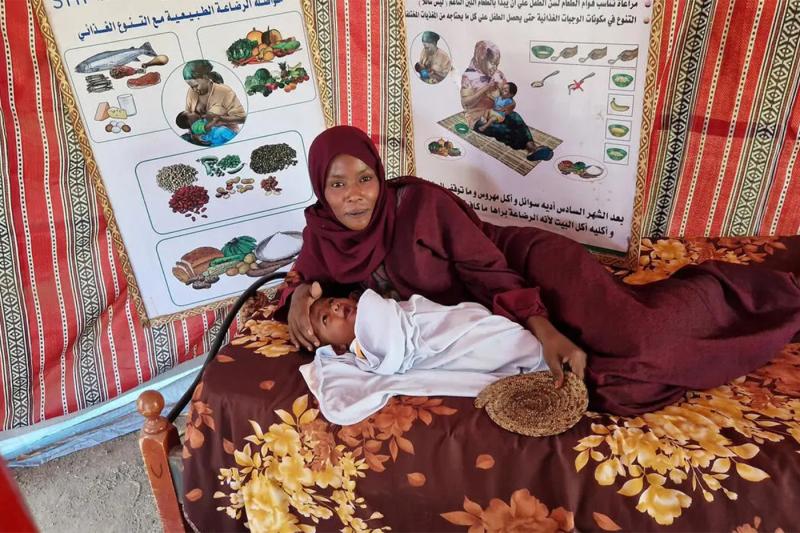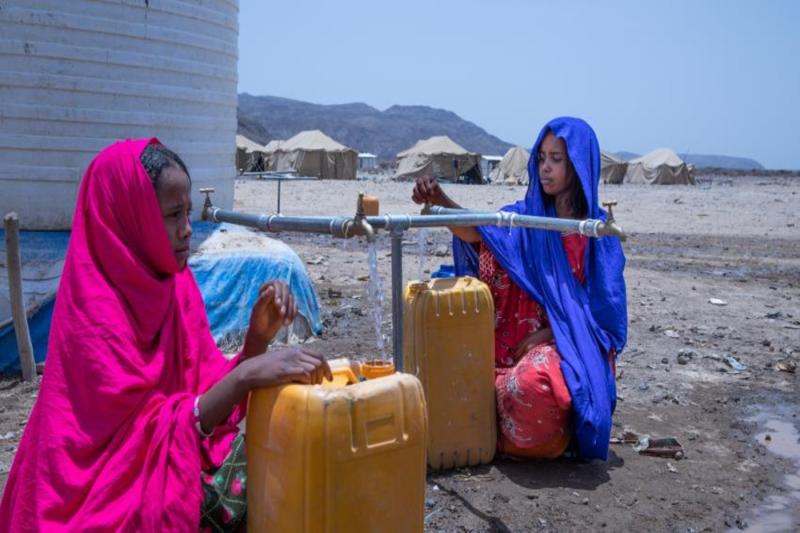
Bangladesh: Rohingya refugees and locals help newcomers in need
Nasima Khatum became a refugee in 1992, at the age of 10. Now a mother, she cooks up large pots of rice over a wood fire to feed famished fellow Rohingya refugees fleeing an outbreak of violence that erupted in Myanmar in late August.
Aided by five other women volunteers, she bags up the steaming rice to feed 400–500 of the neediest children, women and men, stumbling into the area in their thousands under driving monsoon rains.
“We don’t have money, we can give time and labour,” she says. “We came two decades before, we couldn’t just stay home, we had to do something for these new people.”
Nasima is part of a large refugee volunteer force, supplemented by Bangladeshi citizens, mobilizing throughout two official camps in south-east Bangladesh. Working closely with local residents and UNHCR, they are drawing on years of experience and local knowledge to help respond to the largest refugee emergency the region has seen.

“They are the pillar of every activity that we do, and they have been doing this from the very first day, using their own savings,” says Istiaque Ahmed, an Assistant Protection Officer with UNHCR at Kutupalong refugee camp, which was set up in 1992 – the year Nasima arrived. With the help of CERF funding, UNHCR provided immediate support to community- based efforts to further relieve the pressure on host communities and refugees.
“They were collecting food and rice from door to door, then cooking in the communal kitchens, even before the donor community reacted,” he said.
New arrivals are often rain-soaked, footsore, exhausted and weakened after trekking for a week or more across rough terrain, swollen creeks and jungle. Getting aid to the most vulnerable is a life-and-death race against time for the volunteers.

“We target those people who are most in need – like pregnant women who have lost their husbands, elderly people and separated children,” said Mohamed Hassan, who reached Bangladesh as a child in 1991 and grew up in the camp.
Drawing on his knowledge of its maze of alleyways, he finds those on the verge of collapse at schools repurposed as emergency shelters, community centres or on the wayside. They get coupons for a nutritious free meal - typically rice, pumpkins, green plantains or lentils - which can be a lifesaver.
“We’ve lived through this ourselves, so we know what it’s like when you don’t eat even once a day,” added Mohamed, a volunteer with the men’s support group, one of several volunteer committees at Kutupalong and its sister refugee camp, Nayapara. “We are doing everything we can to help them.”
Private donations – ranging from mosquito nets, T-shirts, buckets, cooking pots and candles, to rice, lentils, vegetable oil and potatoes – are received by the manager in charge of the camp. Among camp volunteers making sure they reach those who need them most is Nur Kamal. His methodology is simple.
“Yesterday we went to the furthest part where the new refugees are arriving, which no one had reached earlier. We started giving out the donations there, walking back toward the main camp,” explained Nur, 35.
Of all the people he and his team of 30 men and women volunteers helped, he recalls the reaction of one, an old man without a family. “He had been here for several days without any assistance … The moment we gave him the food and other items, he grabbed hold of me, blessed me and wept. He said: ‘You are the first one who came here to help me.’”
This story features on CERF 2017 Annual Report


